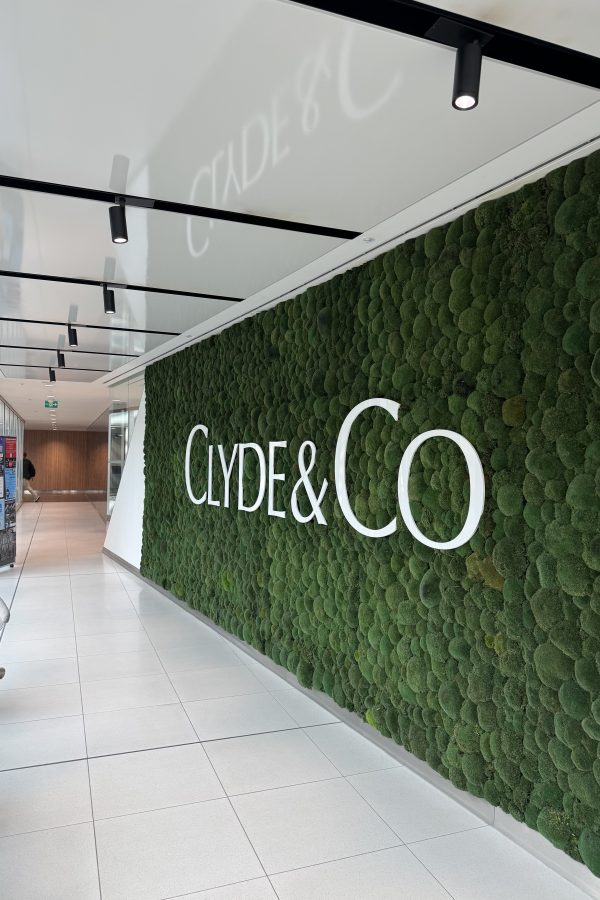Like other sectors, the legal industry faces tough recruitment challenges right now. But how can firms show off their unique cultures to picky candidates?
Shortly before the pandemic, Becky Male, employer brand and engagement manager at law firm DAC Beachcroft, wanted to find out why people enjoyed working there.
“People would say it was a ‘nice’ place to work, but that’s not a differentiator,” she says. She even showed the executive team recruitment advertising copy from three separate firms, including their own with names of law firms hidden. “We played ‘Guess the Law Firm?’ No-one could get ours from the three shown, so we wanted to get to the bottom of what was different, as at the time many law firms were broadly saying the same thing.”
Like many industries, the legal sector is experiencing talent shortages at a time when its services are in high demand. Salaries for junior lawyers in top firms now approach £140,000 while Stephenson Harwood is even offering electric cars as an incentive to lure people in.
But it can also be a profession where the perception is that all firms, and the roles within them, are the same. “Firms need to get absolute clarity on where they position themselves: who they are, who they wish to be. If they can nail who they are that will help them differentiate themselves,” says John Rice, director of Bowland Solutions.
In a competitive recruitment market, how can law firms set themselves apart?
Ask your workforce
DAC Beachcroft held focus groups across its UK and international offices and stakeholder interviews with senior staff to try and uncover what the “essence” of working for the firm was. “We hoped there would be a really strong lightbulb moment, but there wasn’t one big thing – instead there were differentiators in different parts of the Firm or for some key role types,” adds Male.
“So after internal research we came up with a core proposition, then secondary propositions and mini propositions across groups such as senior lawyers and Business Services. This gave us something to lean upon for our recruitment advertising.” For senior lawyers, for example, what drew them to the firm was its collaborative culture and partners’ levels of openness and respect, as well as financial success.
“In developing an employer value proposition there’s always a quantitative and a qualitative element,” explains Mike Hanbidge, senior consultant at Blackbridge Communications. “The data might validate certain assumptions for you or create a hierarchy of propositions to run with, but then you have to probe it for meaning. When you say we’re client focused, what does that mean in practice?”
Tell your story
Armed with information from surveys or focus groups, it’s important to go beyond the data and tell the human stories that shape your firm, advises Rice from Bowland Solutions. “Be honest,” he says. “You need to give recruits an idea of the day-to-day; a visceral sense of what it’s like to work there. If you have a unique selling point, make it known rather than feeling you have to be perfect on everything.”
This needs to translate into how firms interact with candidates in the interview and application process, he adds. “This is the first moment they get that ‘real-life’ interaction with you, and if it feels too mechanical – such as a series of tests rather than an opportunity to engage at a personal and human level – they’ll feel put off.” Again, it’s all about quantifying the details behind your messages rather than broad statements. Hanbidge adds: “If you’re talking about work-life balance, for example, for some that might mean you get your weekend back. Dig into what you mean and pull out nuances that build up a picture of what life is really like.”
Some firms have done this by having trainees put together a video diary of their time at the firm, encapsulating what happens in and out of the office. Content such as blogs from lawyers and their practice areas don’t just have to be LinkedIn fodder for clients, they can also offer an honest window into life at the firm for prospective employees.
Find your ‘purple cow’
Author and entrepreneur Seth Godin, in his bestselling book ‘Purple Cow’, talks about the thing that makes your products or services stand out from competitors. It may not be that the product or service itself is unique (a cow is not remarkable, after all), but the fact that what you do means your clients seek you out because they can’t get that anywhere else. This will be the next phase of candidate attraction at DAC Beachcroft, explains Male.
The next layer is employee experience – what is it that creates an emotional connection at our firm, particularly when we’re not always in the office? We need to build on the psychological connection,” she says. As part of the Firm’s engagement journey a plan is in place to invest in a new engagement platform that will quantify aspects of that connection, while managers will be able to access learning content in a new training system, Pod.
One of the challenges is that firms want to shout about what they’re doing to build more inclusive cultures, but don’t feel their diversity data backs this up. Being honest but bold is the answer here.
“Some firms are doing tremendous work in terms of outreach and social mobility but they worry that they don’t have the numbers at partner level [of people from under-represented groups]. But if you have an aspiration to be different, you can qualify it with things you do now but also offer a roadmap of what you will do,” says Hanbidge from Blackbridge.
A message for everyone
Conveying a message that your firm is a unique place to work is one thing, but how authentic is that experience among the senior people in the business? Furthermore, is the proposition only focused on fee-earners when attracting and retaining skills in non-fee-earning parts of the organisation is equally important?
Hanbidge adds: “Non-fee-earners need to be enthused and excited and feel that the brand reflects their experience too, so while your overarching message may feel similar to other firms, it’s how you use messages in different combinations for different types of employees that will create a sense of difference. You’re having a more specific conversation between the firm and that person.”
Getting early engagement from senior partners as to how far you can push that message of difference will determine its success, he concludes. But the most important factor is authenticity: “Culture is so difficult to articulate without sounding like everyone else, so you have to be honest. If you give people a voice, they won’t oversell, they’ll sell your culture in a believable manner.”










